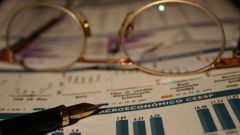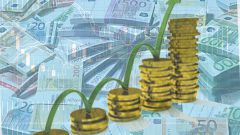You will need
- calculator, pen, notebook, economic indicators of the project implementation
Instruction
1
Calculate the payback period of the project, that is the time interval after which the project starts to bring profit.T = K/N, where
T – payback period, annual capital expenditures, P – project income.For example, in the first year of implementation of the project , the company implemented the purchase of new equipment worth 15 million rubles. In the second year of implementation of the project the company had a major overhaul workshops to improve the work of the division. For repairs, spent 2 million rubles. In the first year the profit from the project amounted to 5 million rubles, and the second – 17 million rubles. If the cash flows during the year, quarter or month are not the same, is to calculate the payback period for each of these time intervals. In the first and the second year he will be, respectively:
T1 = 15/5 = 3 years
T2 = 2/17 = 0.11 year or in about a month, the project will pay off for the same amount of profit.
T – payback period, annual capital expenditures, P – project income.For example, in the first year of implementation of the project , the company implemented the purchase of new equipment worth 15 million rubles. In the second year of implementation of the project the company had a major overhaul workshops to improve the work of the division. For repairs, spent 2 million rubles. In the first year the profit from the project amounted to 5 million rubles, and the second – 17 million rubles. If the cash flows during the year, quarter or month are not the same, is to calculate the payback period for each of these time intervals. In the first and the second year he will be, respectively:
T1 = 15/5 = 3 years
T2 = 2/17 = 0.11 year or in about a month, the project will pay off for the same amount of profit.
2
Calculate the simple rate of return or indicator, which indicates which part of the investments pays off with profits.PNP = PE, where
PNP – simple rate of return, NP – net profit, OF the investment costs.
In our example, the ordinary rate of profit in the first and second year respectively:
ПНП1 = 5/15 = 0.33 million,
ПНП2 = 17/2 = 8.5 million rubles.In other words, in the second year of implementation of the project , it can be argued that the investment paid for itself, the project is promising.
PNP – simple rate of return, NP – net profit, OF the investment costs.
In our example, the ordinary rate of profit in the first and second year respectively:
ПНП1 = 5/15 = 0.33 million,
ПНП2 = 17/2 = 8.5 million rubles.In other words, in the second year of implementation of the project , it can be argued that the investment paid for itself, the project is promising.
3
Compare the results obtained according to the simple rate of return and payback period. In our example, in the second year of implementation of the project investments begin to work for profit. Approximately two years and one month, the project will fully pay for itself, and therefore, it can be argued, the project investments were not invested in vain.
Note
Often these indicators are not sufficient to calculate the payback of complex projects that are implemented gradually in different areas (e.g., construction and sale items). In this case metrics are calculated for each specific activity and with changes of monetary receipts in a separate reporting period.








